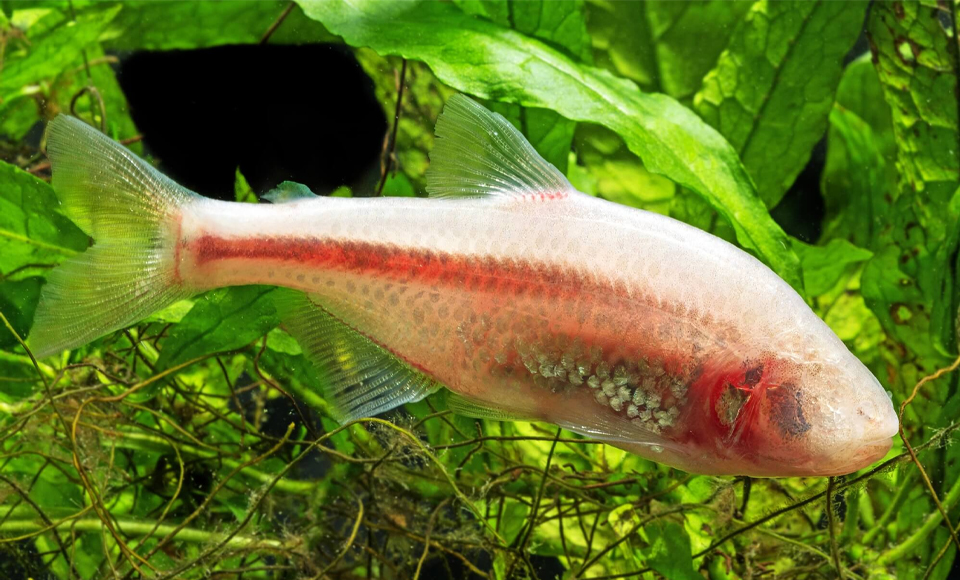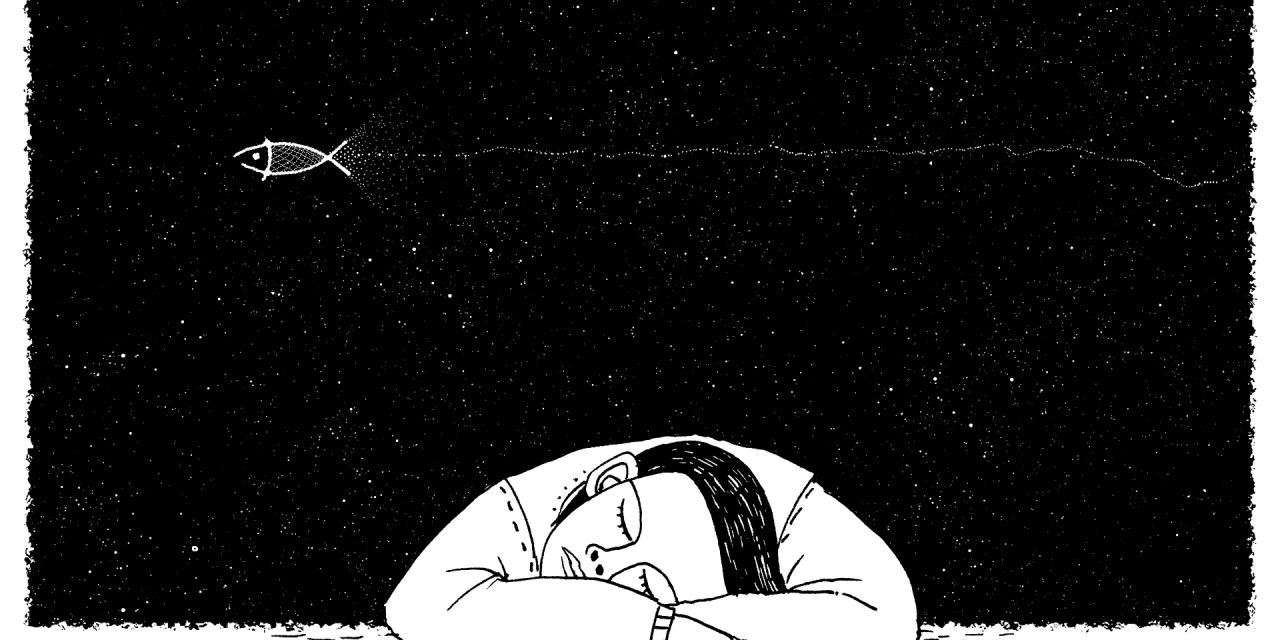The Hidden Secrets of Sleep Within Cave Fish
An Inquiring Mind by Ginny SmithDeep in the underground caves and caverns of Mexico there is a very special type of fish.

It might not be the flashiest fish in the river, but Astyanax mexicanus is certainly one of the most interesting. This is because it comes in more than one type. These types are the same species, and could inter-breed if they wanted to, but they live very different lives. One inhabits rivers in Mexico and across the south of the USA and has a typical fishy life, swimming around, looking for plants or small animals to munch on. But the other, which may live just a few metres away, has adapted to a very different lifestyle.
Unlike their surface-dwelling relatives, these cavefish live underground, in the many waterways running beneath Mexico’s surface. It is thought they have lived these subterranean lives for half a million years, and so they have changed in appearance and behaviour compared to their aboveground neighbours. For one thing, they have lost their eyes. There is no need for eyes when you live in eternal darkness. They have also lost all the markings on their skin. Why bother with melanin to protect you from the sun if you live underground? [1]
These two groups of fish provide researchers with an unusual insight into evolution, genetics and, crucially to our story, the circadian rhythm, or body clock. Normally, to work out what a gene does, scientists have to find or create a mutant animal with changes to that gene and compare them to the ‘wild type’ that doesn’t have that change. So if a normal fly has red eyes, but a fly with just one gene different has black eyes, you can say you have found a gene involved in eye colouring. But it’s unusual to find two similar animals, with just a few genetic changes, living right next to each other. The cavefish provide a handy natural experiment to help us understand why we have body clocks
If you have ever had jet lag, you will know that our body clocks are vital in telling us when to sleep. But why is this the case? Why not just base when we sleep on light levels, or simply on how long we have been awake? The common hypothesis for why animals (and plants) have circadian rhythms is that it keeps us in sync with the cycle of night and day on this planet we call home. And this is supported by the fact that we can use light to re-set our natural clocks, ensuring we stay in tune with sunrise and sunset. So it might be easy to assume that a cave fish, living in the darkest depths, wouldn’t need a circadian rhythm. In its rocky home, it is protected from cycles of light and dark, food is available throughout a 24-hour period, and there isn’t even much of a temperature change to signal where the earth is on its daily rotation. Surely, in the same way it lost its unnecessary eyes and pigmentation, over thousands of years of evolution the cavefish would have lost its biological clock?
Andrew Beale investigated these fish for his PhD, taking samples from fish in the lab to test their gene activity (something which shows a circadian rhythm in other animals) at different times of day. And he discovered that these blind fish do have daily rhythms. Even more astonishingly, they could reset them with light, which they detect through photosensitive pigments in their skin. In their everyday lives, in the caves, this has been harder to test but findings suggest they do have a rhythm, though it may be weaker. But the bigger question was why. Why would something that lives underground, sheltered from the rhythms of the earth, have retained a circadian pattern?
Beale believes there is something more fundamental going on than we had ever realised. Perhaps rather than being an external force that we need to synchronise ourselves with, consistent sleep patterns allow our bodies to sync internally. As he explained to me, ‘Every cell in the body has a rhythm, and even if they don’t use the Sun to synchronise these, it is vital for organisms to do so. So perhaps sleep arose in response to this grouping of processes, ensuring the body’s cells all carry out their maintenance simultaneously, rather than in conflict with each other.’

These essential processes could be cell growth versus cell death, or at the level of the brain, taking in new information versus processing and storing memories. If the brain carried out both at the same time, it could lead to chaos, with fragments of your current surroundings being stored within memories from the day before. So perhaps the circadian rhythm evolved to ensure these vital processes take place at different times, so they can’t interfere with each other.
It’s not just these particular cavefish that have a body clock. Though not many studies have been carried out, it seems that other cave-dwelling animals retain a circadian rhythm of sorts too, although it is often weaker, and may not respond to light. And we now know that plants, and even single-celled organisms like some bacteria and yeast, have a version of a circadian rhythm as well. While we don’t yet know for certain why, it definitely seems that having a pattern of some kind to follow is vital for life on earth.
Furthermore, why not watch a conversation with Ginny and Helen Czerski about sleep and work patterns in bizarre environments here or grab yourself a copy of Ginny’s book Overloaded here.
[1] Interestingly, scientists used to think this was an example of a trait disappearing simply because it no longer provided a benefit, but recent evidence suggests there may be more to it. It seems melanin is made from the same pre-cursors as a lot of brain chemicals, so if you stop making it, there is more of this precursor available. This could boost the amount of various neurotransmitters, which may provide a benefit to the animal.
 Ginny Smith is a science presenter and writer. A Natural Sciences and Psychology graduate of Cambridge, Ginny performs science shows all over the world and presents a wide range of science content for the likes of the Cosmic Shambles Network and the Naked Scientists. She is the co-author of three DK Publishing books looking at science, food and the human body. Her first solo book, Overloaded is out now. She is @GinnySmithSci on Twitter.
Ginny Smith is a science presenter and writer. A Natural Sciences and Psychology graduate of Cambridge, Ginny performs science shows all over the world and presents a wide range of science content for the likes of the Cosmic Shambles Network and the Naked Scientists. She is the co-author of three DK Publishing books looking at science, food and the human body. Her first solo book, Overloaded is out now. She is @GinnySmithSci on Twitter.
If you would like to reuse this content please contact us for details
Subscribe to The Cosmic Shambles Network Mailing list here.


